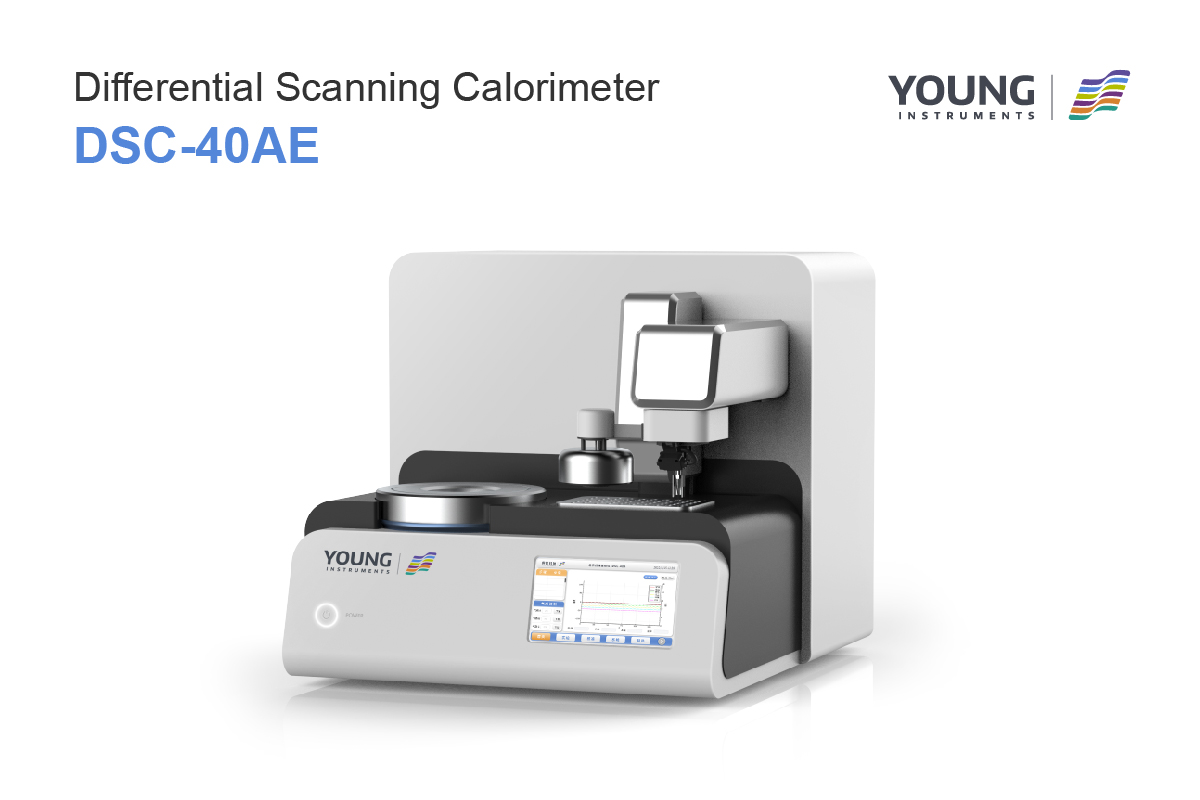How Does Differential Scanning Calorimetry Work: A Guide
Differential Scanning Calorimetry (DSC) is a thermal analysis technique used to measure the heat flow associated with a sample as it is heated, cooled, or held at a constant temperature. It is a widely used technique because it provides valuable information about the thermal behavior of materials, including melting points, glass transition temperatures, and reaction enthalpies. In this article, you will learn how DSC works and how it is used in various applications.
DSC works by measuring the difference in heat flow between a sample and a reference material as they are both heated or cooled at the same rate. The sample and reference materials are placed in separate pans, which are then heated or cooled by a furnace. As the temperature changes, the heat flow to each pan is measured and compared. Any difference in heat flow between the sample and reference is recorded and plotted as a function of temperature. This provides information about the thermal behavior of the sample, including phase transitions and reaction enthalpies.
Fundamentals of Differential Scanning Calorimetry
Differential Scanning Calorimetry (DSC) is a thermal analysis technique that measures the difference in heat flow between a sample and a reference material as a function of temperature or time. DSC is widely used in material science, chemistry, and pharmaceuticals to study thermal properties of materials, such as melting point, glass transition temperature, and enthalpy of phase transitions.
Principle of Operation
The principle of operation of DSC is based on the fact that when a sample undergoes a physical or chemical change, it absorbs or releases heat. This heat flow is detected by a thermocouple and recorded as a function of temperature or time. The DSC instrument measures the difference in heat flow between the sample and a reference material, which is typically an inert material that does not undergo any thermal transitions in the temperature range of interest. The sample and reference material are heated or cooled under a controlled temperature program, and the heat flow difference is measured and recorded.
Components of the DSC Instrument
The DSC instrument consists of several components, including a sample holder, a reference holder, a furnace, a thermocouple, and a temperature controller. The sample holder and reference holder are typically made of a high-temperature resistant material, such as aluminum or platinum, and are used to hold the sample and reference material, respectively. The furnace is used to heat or cool the sample and reference material at a controlled rate, typically between 0.1 and 100 °C/min. The thermocouple is used to measure the temperature of the sample and reference material and to detect the heat flow difference between them. The temperature controller is used to maintain the desired temperature program and to control the heating or cooling rate.
In summary, DSC is a powerful thermal analysis technique that measures the difference in heat flow between a sample and a reference material as a function of temperature or time. The principle of operation of DSC is based on the fact that when a sample undergoes a physical or chemical change, it absorbs or releases heat. The DSC instrument consists of several components, including a sample holder, a reference holder, a furnace, a thermocouple, and a temperature controller.
Sample Preparation and Analysis
Differential Scanning Calorimetry (DSC) is a thermal analysis technique used to study the thermal behavior of materials. The sample preparation for DSC analysis differs depending on the type of sample to be analyzed. In most cases, the compound of interest is studied in buffered aqueous solutions. The sample is typically placed in a small aluminum pan with a separate lid, and then the lid and the pan are crimped together. The reference material is also placed in a separate aluminum pan with a lid and crimped together. The sample and reference pans are then placed in the sample chamber of the DSC instrument.
Sample Considerations
When preparing a sample for DSC analysis, it is important to consider the sample size, shape, and purity. The sample should be homogeneous and have a uniform size and shape to ensure accurate and reproducible results. The sample should also be free of impurities that may affect the thermal behavior of the material. The amount of sample used for DSC analysis should be sufficient to produce a measurable signal but not so much that it overloads the instrument.
Baseline Determination
Before performing DSC analysis, a baseline measurement is taken to account for any thermal effects caused by the instrument or the environment. The baseline measurement is taken by heating and cooling the empty sample pans under the same conditions as the sample. This baseline measurement is then subtracted from the sample measurement to obtain the true thermal behavior of the sample.
In summary, the sample preparation for DSC analysis involves placing the sample and reference materials in separate aluminum pans with lids and crimping them together. When preparing the sample, it is important to consider the sample size, shape, and purity to ensure accurate and reproducible results. Before performing DSC analysis, a baseline measurement is taken to account for any thermal effects caused by the instrument or the environment.
Interpreting DSC Data
Differential Scanning Calorimetry (DSC) provides valuable information about the thermal properties of materials. The DSC data can be used to identify the thermal transitions and to perform quantitative analysis.
Thermal Transitions
Thermal transitions are changes in the physical or chemical properties of a material as a function of temperature. These transitions can be detected by DSC as endothermic or exothermic peaks in the heat flow curve. Endothermic peaks correspond to heat absorption, while exothermic peaks correspond to heat release.
The most common thermal transitions detected by DSC are the glass transition, melting, crystallization, and decomposition. The glass transition is a change from a rigid to a more flexible state that occurs in amorphous materials. The melting transition corresponds to the change from a solid to a liquid state, while the crystallization transition corresponds to the reverse process. The decomposition transition corresponds to the thermal breakdown of the sample.
Quantitative Analysis
DSC can also be used for quantitative analysis. The enthalpy change associated with a thermal transition can be used to calculate the heat capacity, degree of crystallinity, and other thermodynamic properties of the sample.
The heat capacity is a measure of the energy required to raise the temperature of the sample by one degree Celsius. The degree of crystallinity is a measure of the amount of crystalline material in the sample.
DSC can also be used to determine the purity of a sample. The melting point and heat of fusion of a pure substance are well-defined, and any impurities in the sample will lower the melting point and change the heat of fusion.
In summary, DSC data provides valuable information about the thermal properties of materials. By interpreting the thermal transitions and performing quantitative analysis, DSC can be used to determine the heat capacity, degree of crystallinity, and purity of a sample.
Applications of Differential Scanning Calorimetry
Differential Scanning Calorimetry (DSC) is a powerful analytical technique that has been widely used in various fields, including material science, polymer chemistry, pharmaceuticals, and biochemistry. In this section, we will discuss some of the most common applications of DSC in polymer characterization and pharmaceutical analysis.
Polymer Characterization
DSC is a valuable tool for characterizing the thermal properties of polymers. It can provide information about the glass transition temperature (Tg), melting temperature (Tm), and crystallization behavior of polymers. DSC can also be used to determine the degree of crystallinity and thermal stability of polymers.
One of the most common applications of DSC in polymer characterization is the determination of Tg. Tg is the temperature at which a polymer transitions from a glassy state to a rubbery state. This transition is accompanied by a change in heat capacity, which can be detected by DSC. By measuring the heat capacity as a function of temperature, the Tg of a polymer can be accurately determined.
Another important application of DSC in polymer characterization is the determination of Tm. Tm is the temperature at which a polymer transitions from a crystalline to a liquid state. This transition is accompanied by a change in heat flow, which can be detected by DSC. By measuring the heat flow as a function of temperature, the Tm of a polymer can be accurately determined.
Pharmaceutical Analysis
DSC is also widely used in the pharmaceutical industry for the analysis of drugs and drug formulations. DSC can provide information about the thermal properties of drugs, such as their melting point, glass transition temperature, and thermal stability. This information can be used to optimize the formulation and storage conditions of drugs.
One of the most common applications of DSC in pharmaceutical analysis is the determination of the melting point of drugs. The melting point is an important parameter that can affect the bioavailability and stability of drugs. DSC can accurately determine the melting point of drugs, which can be used to optimize the formulation and storage conditions.
Another important application of DSC in pharmaceutical analysis is the determination of the thermal stability of drugs. DSC can be used to study the degradation kinetics of drugs under various conditions, such as temperature and humidity. This information can be used to optimize the formulation and storage conditions of drugs to ensure their stability and efficacy.
Advancements and Innovations in DSC Technology
Differential Scanning Calorimetry (DSC) technology has undergone significant advancements and innovations since its inception in the 1960s. Some of the recent advancements include:
High-Pressure DSC
High-pressure DSC is a relatively new technique that allows you to study the thermal behavior of materials at extremely high pressures. This technique is particularly useful in the study of materials that exhibit pressure-induced phase transitions, such as polymers, ceramics, and metals. High-pressure DSC is also used in the study of geological materials, such as minerals and rocks.
Fast-Scanning DSC
Fast-scanning DSC is a technique that allows you to study the thermal behavior of materials at extremely high heating and cooling rates. This technique is particularly useful in the study of materials that exhibit rapid thermal transitions, such as polymers, pharmaceuticals, and foods. Fast-scanning DSC is also used in the study of materials that undergo glass transitions, such as amorphous metals and plastics.
Modulated DSC
Modulated DSC is a technique that allows you to study the thermal behavior of materials under a sinusoidal temperature modulation. This technique is particularly useful in the study of materials that exhibit complex thermal behavior, such as polymers, pharmaceuticals, and foods. Modulated DSC is also used in the study of materials that undergo phase transitions, such as crystallization and melting.
Multi-DSC
Multi-DSC is a technique that allows you to study the thermal behavior of multiple samples simultaneously. This technique is particularly useful in the study of materials that exhibit similar thermal behavior, such as polymers, pharmaceuticals, and foods. Multi-DSC is also used in the study of materials that undergo phase transitions, such as crystallization and melting.
In conclusion, DSC technology has undergone significant advancements and innovations in recent years, making it a powerful tool for the study of thermal behavior in materials science.









































